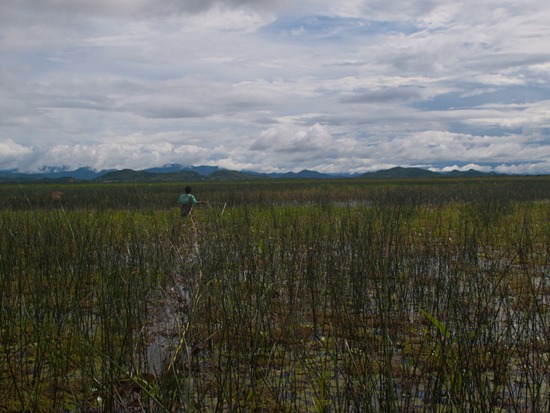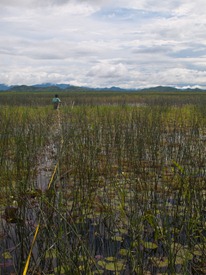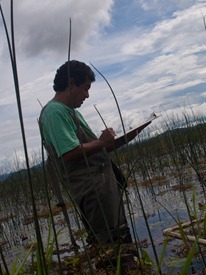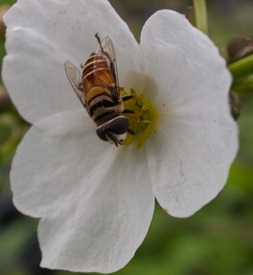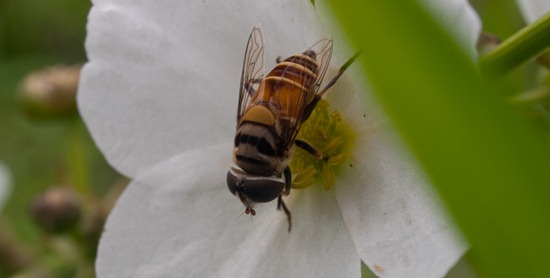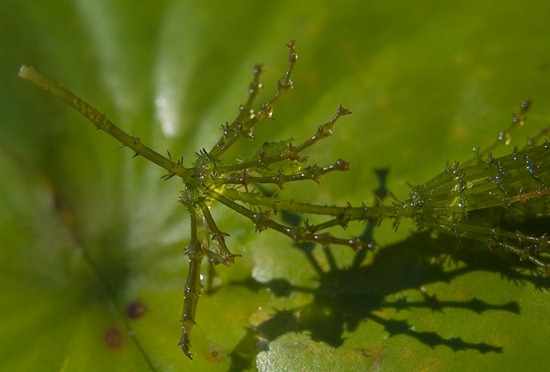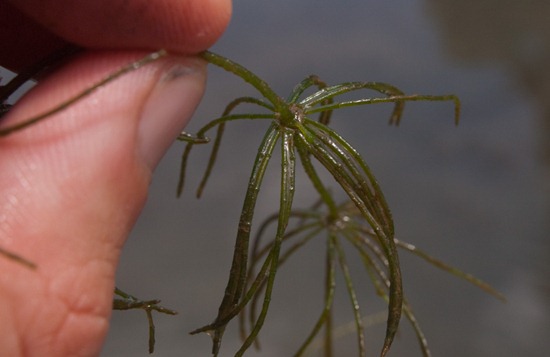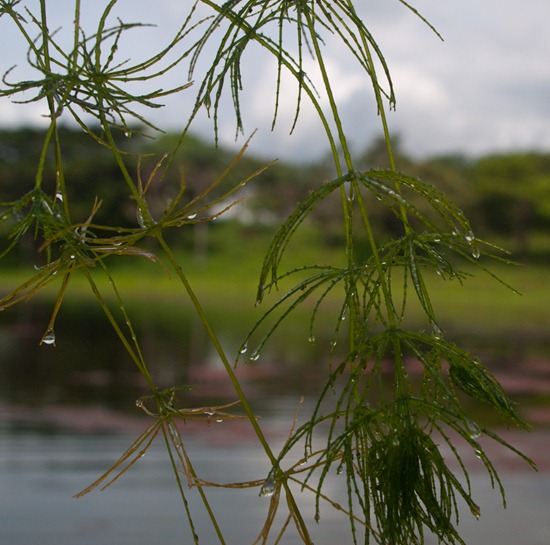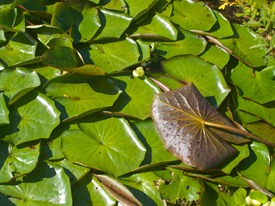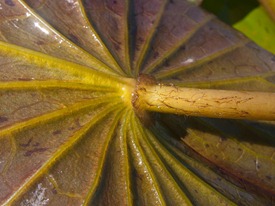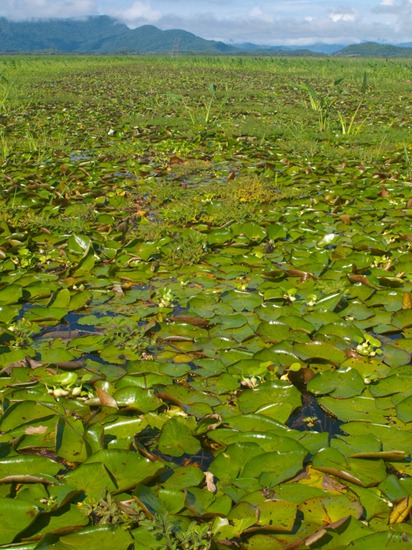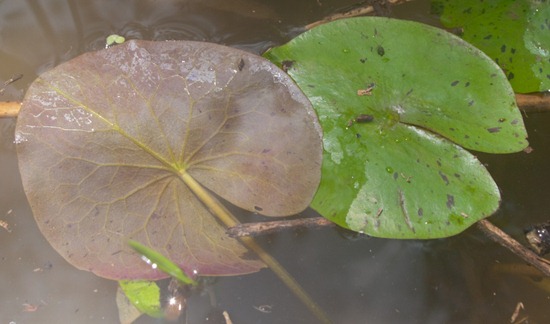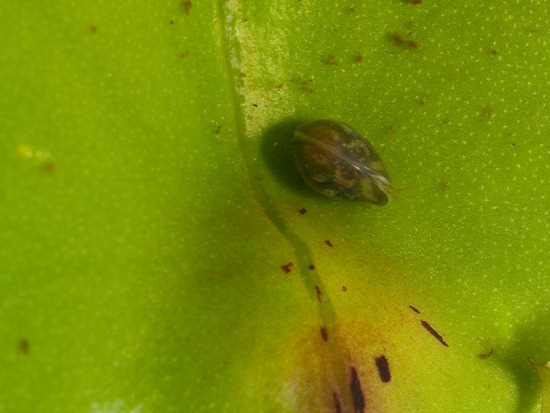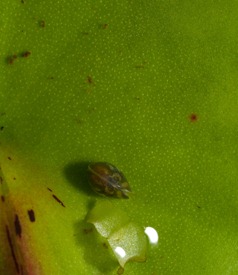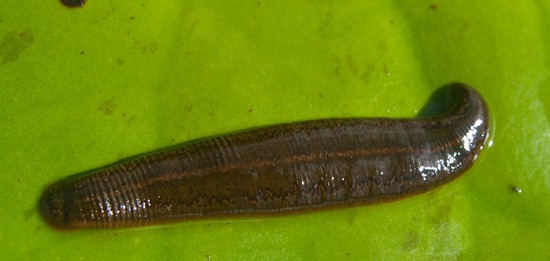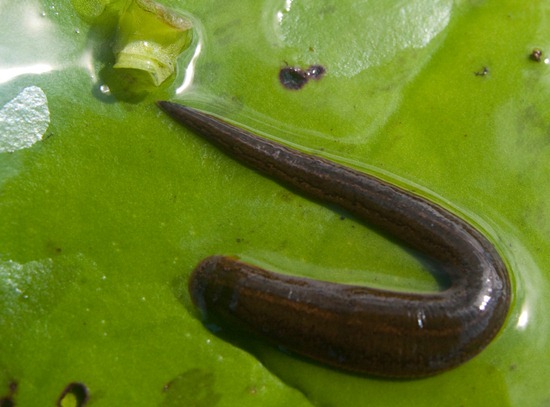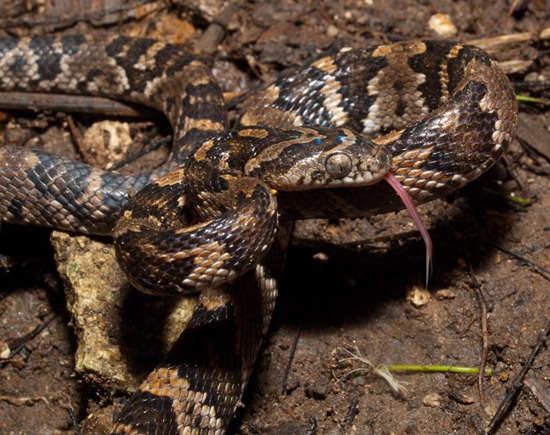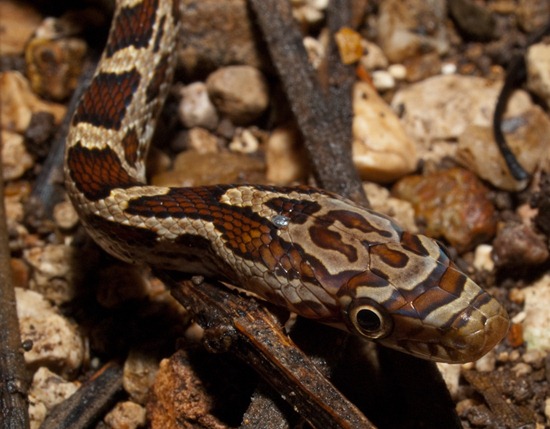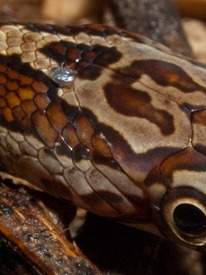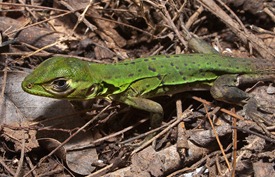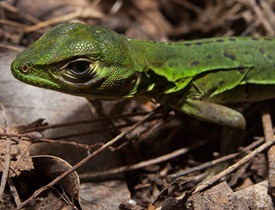I assisted Rafa in conducting a transect to identify plant species presence/absence the other day. I discovered that I don’t know the grasses (Poaceae) well, but most of the other macrophyte species, I’ve got down. I was also reminded that it’s generally a bad idea to have electronics in the wetland here around 3 pm, as that’s when the rains usually come. Luckily, it’s easy to see and hear the rain coming.
Another Syrphid
What is this?
Nymphaea amazonum
Having a ring of hairs surrounding the end of the petiole distinquishes N. amazonum from another common water lily here, Nymphaea prolifera. Both commonly have purple specks on the upper surface of the leaves, and have entire, un-toothed, margins, unlike N. pulchella and N. ampla.
Nymphaea prolifera
| Common in the shallower, west fringes of the wetland, I hadn’t encountered more than N. amazonum and N. pulchella prior to this year at Palo Verde. There are at least four other lily species I’m missing that have been documented in the Tempisque basin according to Crow. | 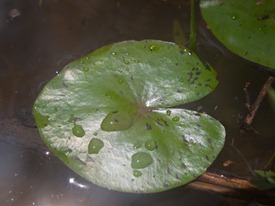 |
Ostracoda
Leech
Trimorphodon quadrupex
| You may recall Trimorphodon from the photo I posted here (almost exactly 1 year ago!) and the BioGSC calendar this past year. Again, a fairly aggressive snake, but also very beautiful. This year, I discover that it’s had a name change (T. biscutatus to T. quadrupex). | 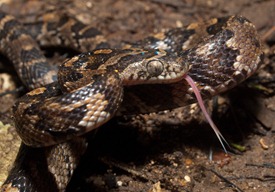 |
Senticolis triaspis
| A new snake species for me, I had misidentified this juvenile Senticolis (formally Elaphe) triaspis as Trimorphodon quadrupex (now distinct from biscutatus) (Savage and Bolanos 2009 Zootaxa), but the reddish color and round pupils didn’t sit well with me. When I keyed the snake out, I discovered that the juvenile is very different than the adult. Although it’s a very pretty, young constrictor, it’s fairly aggressive and has bitten several times – luckily, I didn’t misidentify a poisonous snake… | 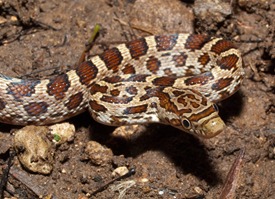 |
Another Ctenosaura similis Juvenile
Much more active than their adult counterparts, juvenile Ctenosaura seem to occupy the same habitat here as some of the Ameiva (maybe leptophys). Additionally, given that juvenile iguanas are more insectivorous than adults, they share some of the same food sources.

